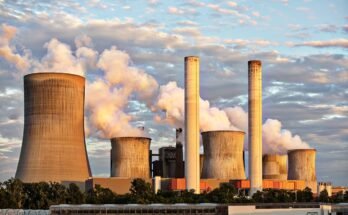Pollution is an increasing global epidemic that endangers the ecosystem and public health. Pollution–the presence of a substance in an environment that, in relatively low concentrations, produces a harmful effect, which is often an undesirable change. Air pollution, water pollution, and soil pollution are the three main types of pollution, which differ in their sources and harmful impact.
1. Air Pollution
Air pollution is one of the most dangerous environmental problems. The main contributors of air pollution are industrial emissions, vehicle exhaust, fossil fuel burning/tree cutting.
Effects on the Environment:
- It is because air pollution contributes to climate change by raising greenhouse gas levels, which causes the warming of the planet.
- It contributes to acid rain that kills crops, fish and buildings alike.
- Gaseous pollutants such as chlorofluorocarbons (CFCs) destroy the ozone layer that protects us from harmful Ultraviolet rays.
Effects on Human Health:
- Long-term exposure to air pollution can lead to respiratory problems like asthma, bronchitis, and lung cancer.
- Dirty air can cause heart disease and strokes.
- Airborne toxins can suppress the immune system and make one vulnerable to infections.
2. Water Pollution
Water Pollution: This takes place when harmful substances including chemicals, plastics, heavy metals, and untreated sewage flow into water bodies causing them to become unsafe to drink and disrupting aquatic ecosystems.
Effects on the Environment:
- Contaminated water destroys marine creatures and kills fishes and other sea life.
- Contaminants —Over-application of nutrient fertilizers to agricultural land causes an overabundance of nutrients to leach into lakes, rivers, and oceans, leading to algal blooms that rob water of oxygen, which kills fish and other ocean and freshwater organisms (eutrophication).
- Water pollution can disrupt ecosystems, disproportionately affecting biodiversity and food chains.
Effects on Human Health:
- Drinking infected water can lead to diseases like cholera, dysentery and hepatitis.
- Toxic chemicals in water, including mercury and lead, are known to bioaccumulate in the body and can lead to development and neurological disorders.
- Agriculture is also affected by polluted water that is used to irrigate the land, which results in unsafe food that may pose health risks to consumers.
3. Soil Pollution
What is soil pollutionIt is the contamination of soil with harmful chemicals, pesticides, heavy metals, and industrial waste, which reduces its fertility and poses a risk to plant, animal, and human life.
Effects on the Environment:
- Farmers, as a result, increasingly suffer from high costs and reduced agricultural productivity, threatening food shortages and economic losses.
- Plants are affected by soil contamination, thus affecting biodiversity and ecosystems.
- Toxic agents in the ground can percolate into groundwater, which adds to water pollution.
Effects on Human Health:
- Soil contaminated with microplastics is already causing diseases of the skin, respiratory diseases and other health problems to the human population through exposure.
- Eating crops that were grown in contaminated soil can cause toxins to enter the human body, resulting in chronic diseases and developmental disorders.
- Soil contamination also reduces access to safe drinking water, which increases health risk.
Conclusion
Pollution is one of the major environmental threats to people and planet health in its different manifestations. We must work together to clean the world of pollution — through stricter governance, public awareness, and clean practices like reducing plastic waste, using wind and solar power, and developing green technologies. It is a duty to protect the Earth from pollution so that we can be better and live longer.



